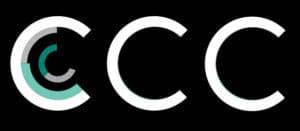Cell, Cell, What is a Cell?
Return to Lesson MenuLesson Overview
Summary
This is an activity that allows the instructor to identify any misconceptions about cells. It’s a great introduction into cells and the characteristics of living things because it requires students to share their ideas. Any misconceptions can then be addressed in later lessons.
For editable worksheets and powerpoints please login here.
Big Idea(s)
Cells share common characteristics. Cells use energy (which includes nutrition, excretion, respiration), grow and develop, reproduce, and sense and respond to their surrounding (which includes movement and sensation).
Scientist use models to develop and communicate their ideas, but all models have their strengths and limitations.
Materials
Cell, cell, what is a cell? Kit (K210)
Contains a collection of objects that can be models for a cell. Objects we have used include:
- bag of instant oatmeal (Apples & Cinnamon)
- Sealed CD-ROM with information about cells
- Plastic or metal Easter egg (empty inside, can be opened)
- Dried bean
- Bottle of water
- Battery
- Mechanical wind-up toy
- Ziploc bag with names of cell parts on paper slips inside bag
- Travel alarm clock
- Puzzle toy
- Calculator
- Bag of Sugar
- Container of salt crystals
- Bag of colored beads
Cell, cell, what is a cell? worksheet
Daly Ralson Resource Center:
Cell, Cell, What is a Cell? Kit (K210)
Grouping
Pairs
Timing
30 min total
5 min – Intro
12 min – Brainstorm
13 min – Discussion/share out
Prerequisites for students
None
Learning goals/objectives for students
- Assess students’ prior knowledge and misconceptions about cells.
- Begin to build culture of working together, sharing ideas within small groups and the group as a whole, thinking critically and being skeptical, constructing an argument and defending a position
- Develop students’ understandings of how models are used in science – and that it is important to recognize both the strengths and limitations of a model.
Content background for instructor
The models (various objects) you will offer students are not perfect models of cells, but will hopefully spark a creative conversation around the characteristics of living cells and limitations of models. As a result of this activity, students may or may not arrive at all of the characteristics of living cells, and that is ok. For your reference, the following are some common characteristics of cells: Storage of hereditary information in genetic code (DNA), cell replication (growth), use of proteins as catalysts, require energy, sense and respond to stimuli.
Lesson Implementation/Outline
Introduction
(5 mins)
Let the students know we will be working with models, specifically robots as models for cells. Before we work on our robotic model of a cell, we will first discuss common characteristics of cells and the pros and cons of scientific models.
Activity
(25 mins)
- Students start by grouping into pairs. Ask them to share their name, favorite flavor of ice cream, and what time they left home to get here this morning. We will use the time they left home as a way to randomly select students.
- Ask the person who left home the earliest to come up to select an object.
- Ask the students to share their selected object with their partner & discuss (12 mins) “How is this object like a cell? How is it not like a cell?” They should spend about 5’ discussing each question. They should use the handout to keep notes.
- At 5’ remind teams to switch to other question, be sure they are taking notes on their ideas.
- After 5’ more minutes of partner discussions. Ask teams to pick the two points around which they had the most interesting discussion to share with the group.
- Ask the person who left home the latest this morning to be the reporter (report to the whole group their most interesting discussion points).
- Go around the room to hear report outs (13 mins). As students share their discussion points, write them on the white board. Start with one per pair and go around the room a second time for any additional points that were missed. Ask for questions after each group presents.
Checking for student understanding
Encourage students during their discussion with their partner as well during their report-out to question and challenge each other. Depending on the age of your students you might want to model how to ask clarifying and/or skeptical questions (“Why do you think that?”, “What made you decide that?”, “But what about ______? How does that fit with your decision?” etc.) Questioning each other does not only challenge students to think deeper but also models how scientists are by nature skeptical of one another’s findings and allows students to become accustomed to defending their positions with evidence.
Wrap-up/Closure
Each of these items you discussed served as a model for a cell (and some are better models than others). Scientists and science educators regularly make use of models to help explain and explore scientific phenomena. In so doing, though, it is critical that they identify the areas where the model is a good representation of what they are studying, and the areas where the model is not a good representation.
NGSS
Performance Expectations
HS-LS1-1 From Molecules to Organisms: Structures and Processes
(Cells contain hereditary information in the form of DNA that determines protein structure responsible for any cellular function.)
HS-LS1-2 From Molecules to Organisms: Structures and Processes
(Multicellular organisms are made of cells, and cells themselves are made up of parts.)
HS-LS1-3 From Molecules to Organisms: Structures and Processes
(Cells sense and respond to stimuli, often using negative or positive feedback to maintain homeostasis and for survival.)
HS-LS1-7 From Molecules to Organisms: Structures and Processes
(Cells require energy, often created by cellular respiration, to survive.)
Disciplinary Core Ideas
Science and Engineering Practices
Practice 2. Developing and Using Models
Practice 8. Obtaining, Evaluating, and Communicating Information
Cross-Cutting Concepts
Scale, Proportion, and Quantity
Systems and System Models
